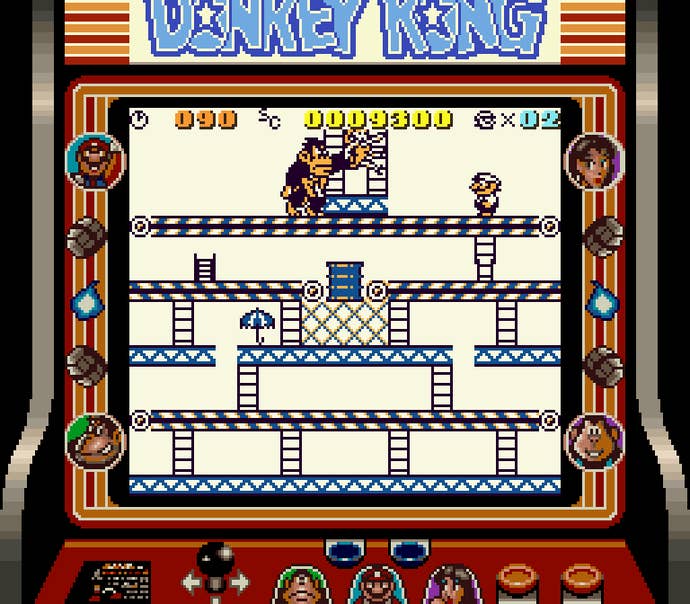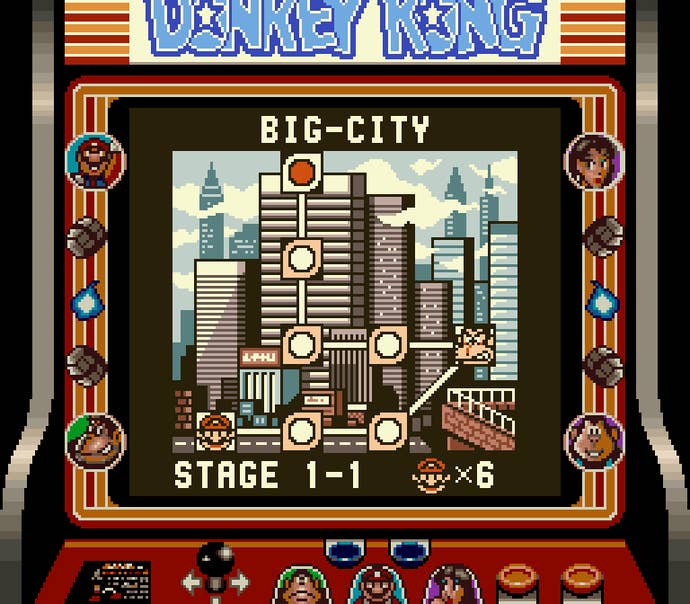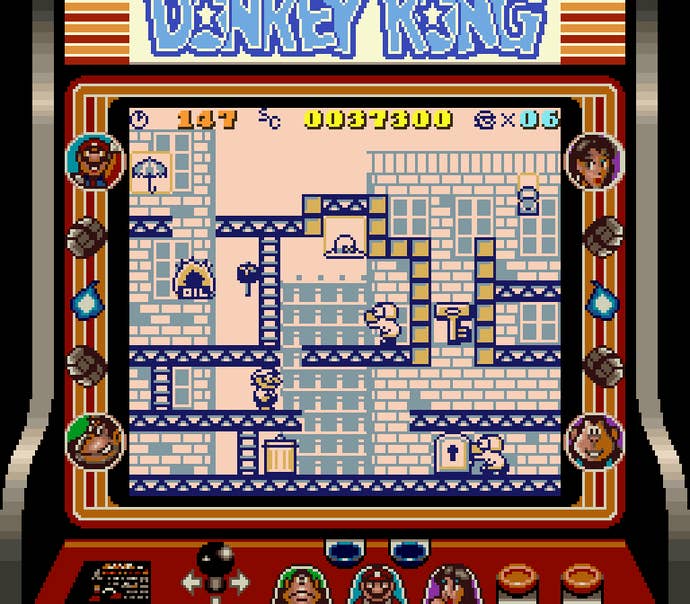Daily Classic: Donkey Kong's Unlikely Game Boy Reinvention
It was no Donkey Kong Country... but maybe that was the point of this portable classic.
This article first appeared on USgamer, a partner publication of VG247. Some content, such as this article, has been migrated to VG247 for posterity after USgamer's closure - but it has not been edited or further vetted by the VG247 team.
Imagine you're the steward of a classic gaming franchise, one that once was the biggest around but that essentially has been missing in action for the past decade. Given the chance to revive it, do you bring back with cutting-edge visuals and contemporary design? Or do you revisit the property with the humblest technology possible, presenting its return as a faithful remake?
Well, if you're Nintendo, you have it both ways. After doing not a damn thing with Donkey Kong for more than 10 years, Nintendo resuscitated its first big hit with 1994's jaw-dropping Donkey Kong Country, in which developer Rare used bleeding-edge tech to infuse a fairly by-the-numbers platformer with graphics that made the Super NES look far more powerful than it really was. At the same time, Kong's original designer, Shigeru Miyamoto, set to work quietly on a totally different kind of game: A semi-remake/semi-sequel to the original arcade machine called, simply, "Donkey Kong."

Designed for Game Boy, the visuals in this alternate take on Kong couldn't have been more spiritually different from Donkey Kong Country's. Rather than pushing the limits of '90s development tools, Donkey Kong '94 featured tiny graphics rendered in the Game Boy's usual four shades of murky green. Sure, it also included a special Super Game Boy-specific mode for some minor visual enhancements, but even so it still looked even more primitive than the 1981 arcade game. After all, the Game Boy's processor was a slightly faster derivative of the chip that had powered the original Donkey Kong; far from being cutting-edge tech, the Game Boy was a decade out of date in 1994.
Likewise, the game itself initially appeared to be a decade out of date as well. By all appearances, it was nothing more than a greyscale rendition of the classic arcade game. Sure, it made up for its monochrome visuals by including the infamous cement factory (cut from the otherwise-faithful NES version due to storage limitations), but the idea that anyone was meant to care about that particular wrong being righted in the age of CD-ROMs and polygons seemed downright laughable.
This perception of Donkey Kong '94 lasted for the approximately 10 minutes it took for most players to complete the arcade game's four classic levels. But something strange happened once Mario plucked the final bolt from the 100m girders: Rather than plummeting to defeat and letting players start a new, harder loop of the game, Kong ran off. Mario followed... and suddenly a massive new map consisting of multiple new stages opened up before him. And once that map was completed, another appeared -- and then another, and another. All told, this version of Donkey Kong consisted not of four stages, but of more than 100.

While the idea of 100 new levels of Donkey Kong would have been some kind of impossibly wonderful dream in the early '80s (when Kong was the hottest thing this side of Pac-Man), a decade later it seemed less compelling. But the new levels weren't simply retreads of old ideas, and Mario wasn't the same limited Jumpman he'd been in 1981. Donkey Kong '94 introduced a heavy element of puzzle design into its platforming, incorporating new obstacles and forcing players to spend more time working out how to reach Kong's perch than simply leaping over barrels.
For his part, Mario demonstrated all the skills he'd picked up in the years since his debut, able to survive longer falls, carrying items as in Super Mario Bros. 2, and demonstrating a great degree of athleticism. In fact, Mario possessed advanced jumping skills right from the beginning of the game, though it wasn't advertised; while players could tackle those opening levels in the standard Donkey Kong style, they could also completely skip the hassle of climbing ladders by performing advanced maneuvers like extra-high handstand jumps. Players could pull off previously impossible tricks like taking barrel-smashing hammers to different levels of the stage by chucking the hammer into the air, scrambling up a ladder after it, and catching it in mid-air. On the other hand, why smash a barrel when you could grab and toss it instead?
Donkey Kong '94 hid big ideas beneath a deceptively humble façade. Indeed, many of the skills Mario demonstrated here for the first time resurfaced in his next major adventure, the revolutionary Super Mario 64. In many ways, this take on Kong was the exact opposite of Donkey Kong Country, which hid a straightforward platformer behind the illusion of advanced graphical tech. Hot new graphics are a much easier sell than quietly brilliant mechanics, though, and it was DKC that Nintendo promoted to within an inch of its life, and thus it was DKC that bought Nintendo's console business some breathing room in the face of Sony and Sega's next-generation consoles.

Meanwhile, Donkey Kong '94, a humble game on a platform no one cared about anymore, was doomed to obscurity until the world rediscovered it years later. Then, the same qualities that doomed it to second-stringer status against Donkey Kong Country made it all the more appealing in retrospect; while DKC's visuals had lost their shine over time, leaving behind a good but unexceptional platformer, Donkey Kong '94 looked no more or less dated than it had at its debut.... but it played as brilliantly as ever.
Why would Nintendo create such a secretly sophisticated follow-up to its first true hit, then let it languish in obscurity on a fading portable system as that same property was visibly redefined by an outside studio's efforts mere months later? Honestly, no one knows. Maybe Donkey Kong '94 had been in the works for years, perhaps initially conceived as the mysterious, never-seen "Return of Donkey Kong" for NES? Maybe it was originally intended to be a portable counterpart to Donkey Kong Country, only for the two games to follow very different creative directions? Then again, maybe it was an act of stubborn pride on behalf of Donkey Kong's creator, who wanted to make one final statement with his first great work before the character irrevocably transformed in the public eye. Whatever its origins, Donkey Kong '94 made for a strange but wonderful follow-up to a true masterpiece of gaming's golden era.





_ddwYK80.png?width=291&height=164&fit=crop&quality=80&format=jpg&auto=webp)


